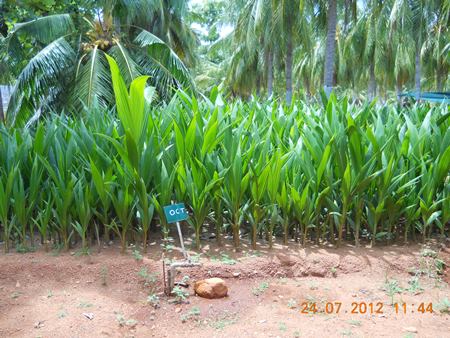 In 1981, Deejay was the first commercial organization in Karnataka to use computers. Therefore in 1983 when the coconut breeding project was started, recording and data entry of the planting and monthly growing information, as well as the monthly productivity of each palm was computerized from the onset. Our data bank now contains all the information about 30,000+ palms.
In 1981, Deejay was the first commercial organization in Karnataka to use computers. Therefore in 1983 when the coconut breeding project was started, recording and data entry of the planting and monthly growing information, as well as the monthly productivity of each palm was computerized from the onset. Our data bank now contains all the information about 30,000+ palms.
Today we select the top 1% of our palms from computerized records of 30,000 palms, primarily based on productivity, and then by manual selection based on 21 characteristics of the palm, and 17 characteristics of the coconut it produces. This stringent and exacting process enables us to breed the best next generation of pedigreed mother stock possible. Emasculation, hand pollination of individual female buttons by brush, followed by bagging and labeling, ensure the accuracy of the pedigree of every mother palm produced. The Deejay Dwarf Mother palm is presently under patenting.
This dwarf begins to flower within 18 months, and produces bunches earlier, with a larger quantity and size of coconuts. These advantages are transmitted in the hybridization process to the Deejay hybrid. The number of leaves on each dwarf palm, the number of leaflets on each frond, and the breadth of those leaflets are measured and recorded. These and many other characteristics are used in the selection process. Furthermore, each breeding farm is continuously being upgraded. Every month, the poorest performers among the dwarf mothers, based on the last 6 years average performance, are culled, and the best and latest pedigreed mothers are planted in their place. This ensures continuous improvement.
